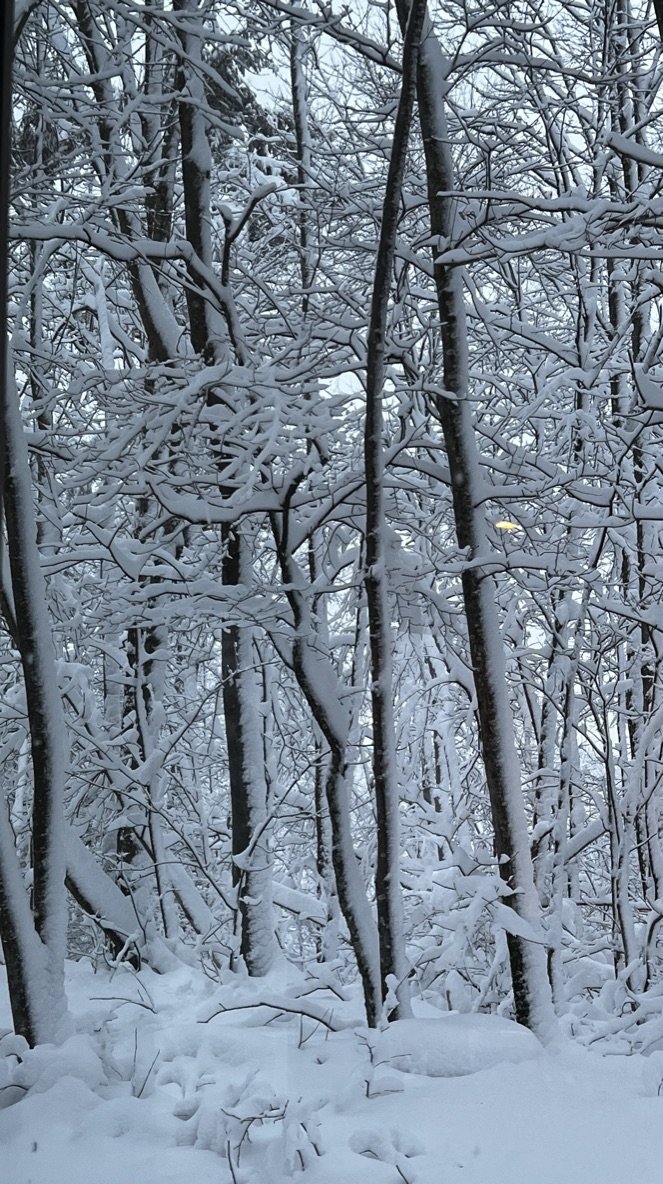I’m trying to figure out what to write about and it’s not coming to me. We are under what can only be described as a thick, downy blanket of snow that continues falling over the remaining 6 to 9 inches of corn snow that has been hanging out on our fields since last week. It’s been warming up just enough during the day to soften where the corn snow is 4 inches deep or less, so I’ve been able to ride and work with my horses in the afternoons but it freezes pretty much solid each night. I cannot imagine what we are going to meet up with after this pending 24 or more inches of snow!!!
I note the horses because for the past twenty years or so I have stopped working with my pony crew every December 1st. I restart things up every March 1st, come hell or high water, or, as in the last three years, ice. Argh! There are two things that I am afraid of, with my horses. One is thunderstorms, the other is ice.
I guess I’m going to write about ice.
I spent 2015 working on an art journal/observation project as the praxis part of my masters’ portfolio at Goddard College, from Jan.1 to Dec.31. It was a somewhat more organized version of what I do as a naturalist artist, so at each session I had to draw and write about what I saw, come up with questions triggered by the observations, then research the answers.
The first day of this project was a clear ice day and it was around noon so I could see all the way down to the bottom of the beaver pond that became the project focus. There was so much to see, but the mind blower was the salamander swimming around the sun warmed bottom! So being a responsible graduate student, I searched for fancy praxis questions to ask as required by seemingly praxis protocols. It was tough going, because only the stupidest one was the one that kept coming back: “Why is there ice?”
Watching this little dude swim about in what clearly was not a super cold environment, I wondered if the ice was keeping the water temperature enough below freezing so that critters and plants would not be killed by the dry cold? Did it stop the water from evaporating in what are, in essence, drought conditions? Was this true for the seeps and streams that fed into the beaver swamp?
The next observation session was a month later. Snow had begun to fall in earnest and there was a pretty good amount everywhere. It was 11 degrees, windy, gray and overall pretty miserable. My observations were mostly written because it was too cold to draw. Now the question was, “Other than to annoy the two guys riding their bicycles up our not terribly well ploughed or sanded dirt road , what is snow’s job in the environment?” Was its job, in part, like ice, to manage soil temperature and maybe, more importantly, protect the soild and the roots of trees from the, in essence, drought conditions?
Basically, the answer to both questions was yes, but more importantly, eight years later the question has become what happens when we don’t get them? I swear that the woods breathed a sigh of relief last week when we got the 9” of snow that then melted just enough to become a 7” of block ice. I don’t know the answers yet, that is on the current Nosey Parker research docket, but I do know that the woodland that my husband and I live in is … well, confused.
I realize this is all a bit arty and woo-woo but seriously, the seasonal confusion created by the weather pattern change is drastic and is painful. Take my word for it, the woods, the open spaces, the rivers, the seeps, they are all hurting. The thing is, it is exactly what was predicted in the 1980’s and dismissed… oh wait, no … 1846? 1896? 1938? 1956? (see links below). The hugeness of climate change on a global level has become obvious even to the most oblivious, but on my tiny micro-me level… it has totally fucked up the order of things as we knew them.
Never mind that heavy snow now comes in March, not January, it’s not coinciding with seasonal sunlight which has messed up things like insect and pollinator emergence, ephemeral bloom times(either way too early or way too late ). We’ve watched these seemingly minor misses screw up all sorts of other things that matter, too such as food chains for our forest yearlong residents, as well as our migrators. A small example of when these are not working right: When the snow comes two months late, the spring ephemerals that emerging insects nosh on aren’t there. They starve. When there are no insects for arriving thrushes or swallows to eat, they don’t stay because they can’t breed. The woods end up being quiet, the barn is not inhabited. I don’t know who eat thrushes and swallows. but I suspect they are affected as well.
It is hard to be part of an ecology on life support. This will change, all things heal but right now it feels like a cancer has exploded into stage 4 and somehow the signs got ignored or missed. More importantly, it feels like, at least on our home turf, the forest is pissed.
https://royalsocietypublishing.org/doi/10.1098/rsnr.2020.0031 Eunice Foote 1856
https://www.tandfonline.com/doi/abs/10.1080/14786449608620846 Svante Arhenius 1896
https://rmets.onlinelibrary.wiley.com/doi/abs/10.1002/qj.49706427503 G.S. Callendar 1938
https://onlinelibrary.wiley.com/doi/abs/10.1111/j.2153-3490.1956.tb01206.x Gilbert N. Plass 1956


